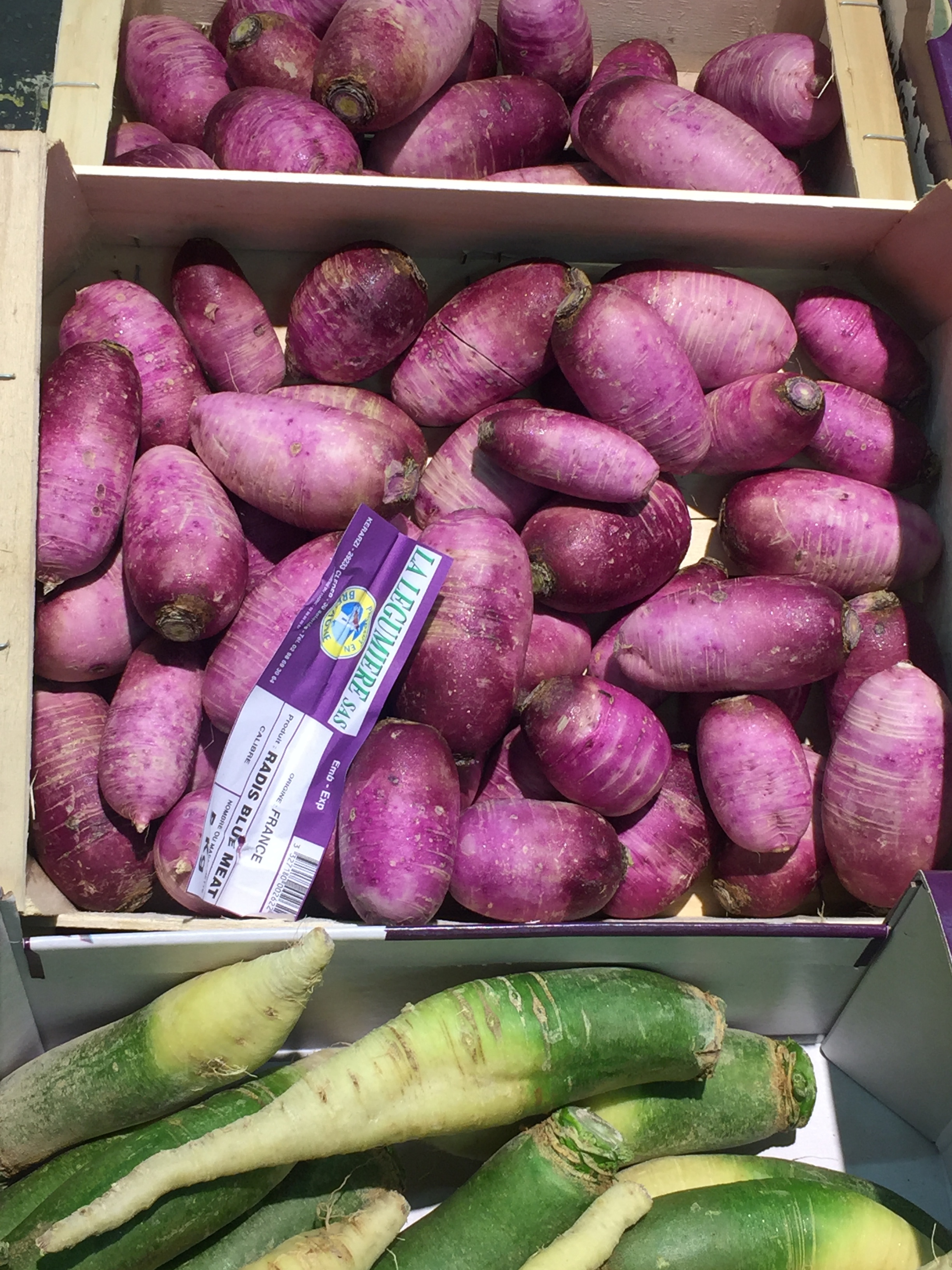White Radish
Photo © Puntarelle & Co
Radishes
A member of the mustard family, Raphanus sativus, the Radish is native to Western Asia. Cultivated for thousands of years they had reached the Mediterranean by the time of the ancient Egyptians and Greeks. In Egypt, labourers working on the pyramids were given rations of garlic and radishes. The Greeks even made votive offerings to Apollo in the form of models of radishes in gold – turnips merited the use of lead, and beetroots were rendered in silver. The Romans were early appreciators of the radish too.
Shaped by human selection, the Radish now comes in many forms and colours, from pure white throughout; black with white flesh; a form that is green outside and red within; a variety called Blue Moon which is pale purple of skin and has striated purple and white flesh; and others that have deep-red skins at the top, fading to white at the base, or are completely round and red-skinned. They also come in a huge variety of sizes from the small, elongated Breakfast Radish to large varieties of Daikon, or Mouli, which can grow to more than 30cm long and weigh as much as 3kg. All share a crisp texture and varying degrees of pepperiness. If left in the warmth too long, radishes will soften. Place them in a bowl of iced water for an hour or so and they will regain much of their crispness.
In early Spring, it’s the small red, or red and white, Radish that catches the eye. They take only 3-4 weeks to grow and are best grown early as summer’s heat can turn them harsh and woody unless watered assiduously. They are best simply washed and eaten raw with salt, bread and butter. Larger varieties can grow through the summer until harvested in the autumn. Firm and drier, these later varieties can be roasted or braised. The long, white Asian Daikon/Mouli is relatively mild and can be used raw or cooked. Most of the heat in radishes lies in the skin, so peeling moderates the heat. Cooking them deactivates the peppery enzyme and brings out their sweetness.
Serve small, spring radishes with a bowl of salt; with carrots, young peas or mangetouts and dip them into a bowl of mayonnaise or a garlicky aioli; dip radishes into a bagna cauda sauce (melt anchovies into olive oil and garlic before whisking in butter). Make a radish sandwich – butter brown bread, add a layer of radish leaves and top with sliced radishes and season with salt. The leaves of radish add a light pepperiness to a bowl of salad leaves too. Larger types, like Daikon/Mouli, can be sliced, mixed with chicory leaves and finely sliced fennel, or paired with anchovy. Both ways are good with a citrus and olive oil dressing. Radishes pickle well too. Personally, we wouldn’t cook radish. It’s the peppery crunch that makes them so appealing, so, if you want a mild pepperiness, maybe you should reach for a turnip instead.
Black radish
Photo © Puntarelle & Co
Blue Meat Radish & Green Radish
Photo © Puntarelle & Co



